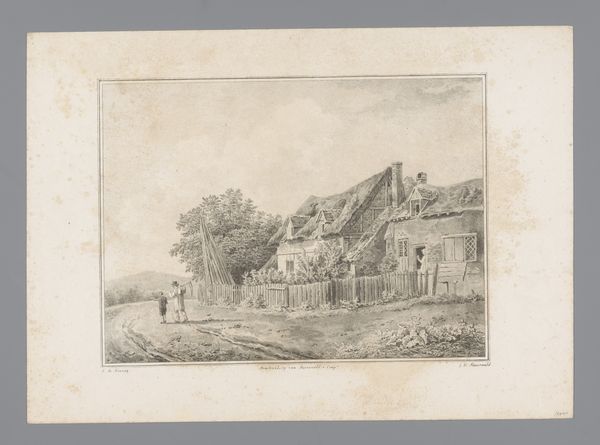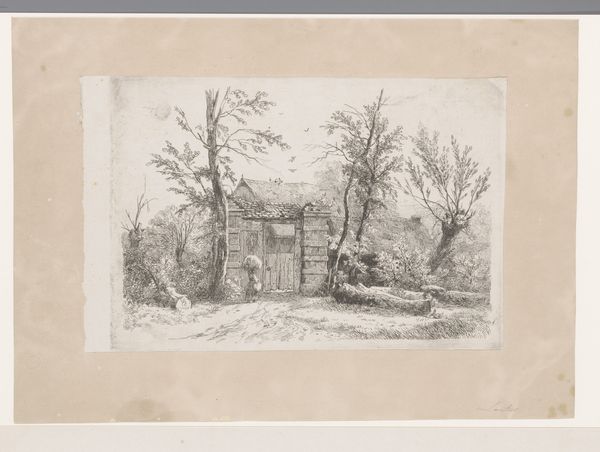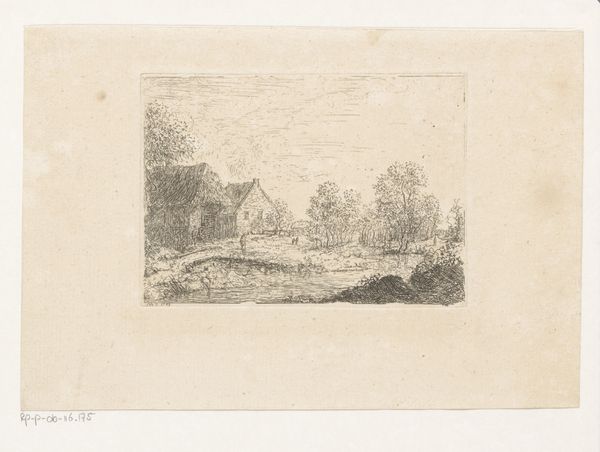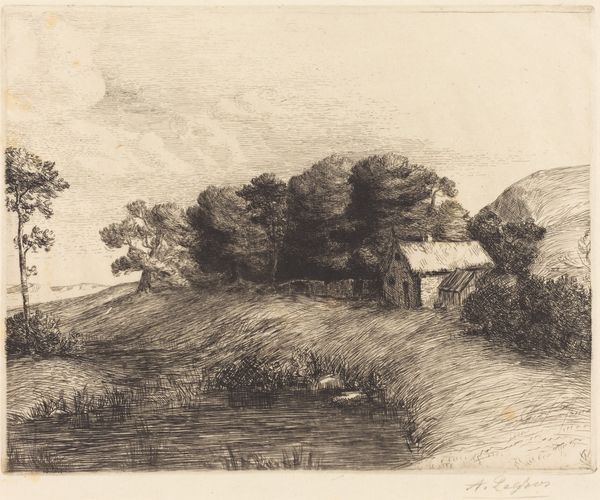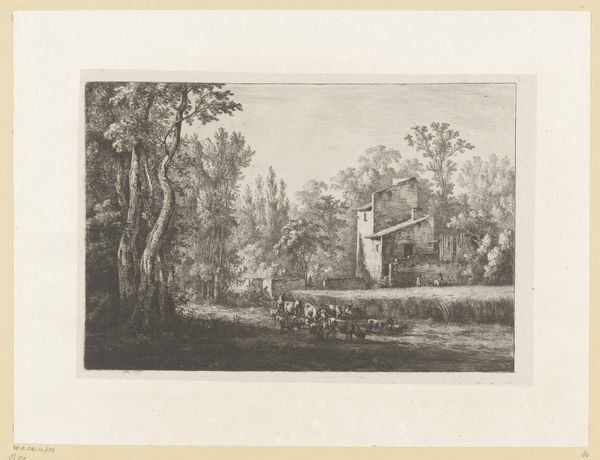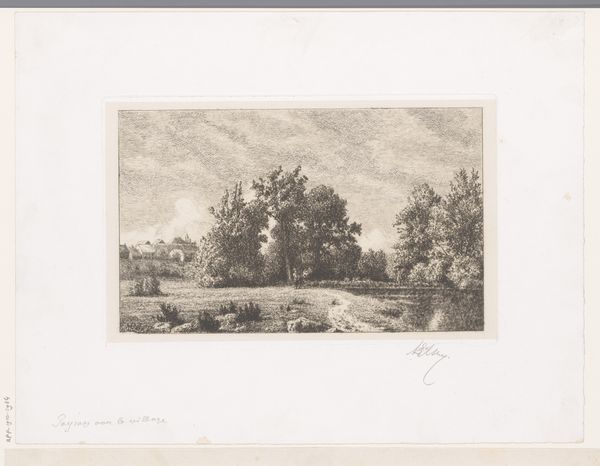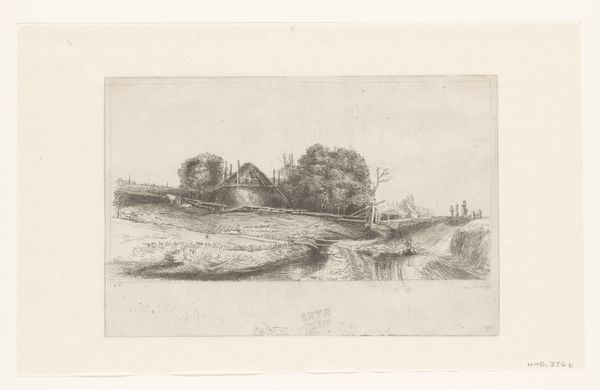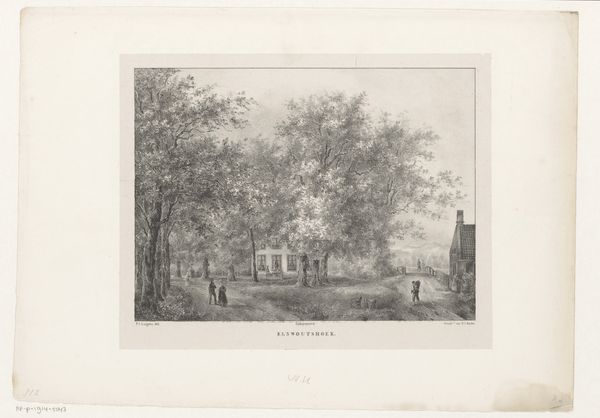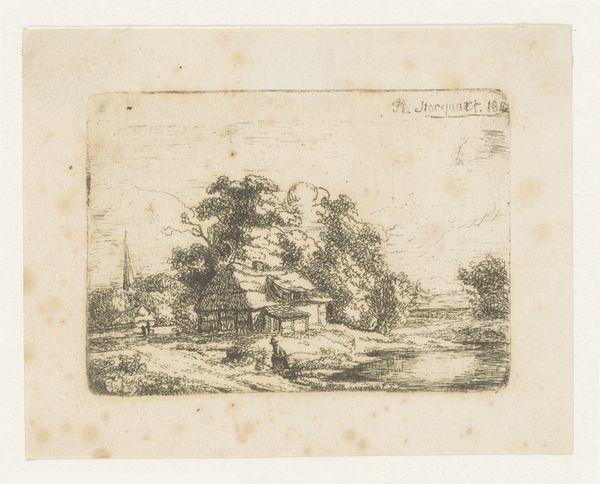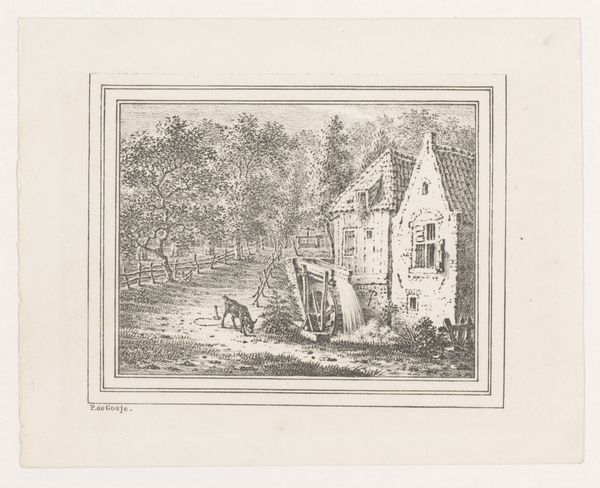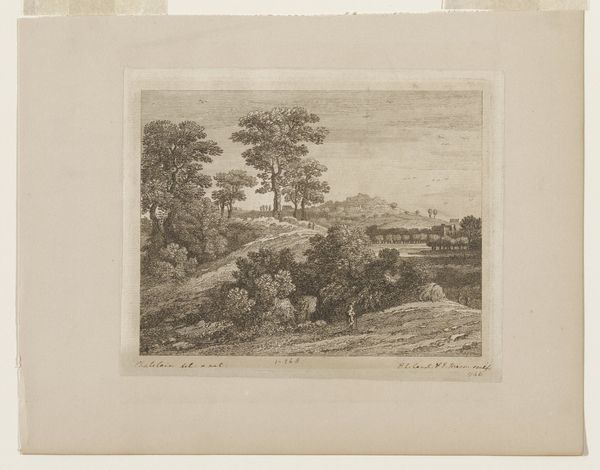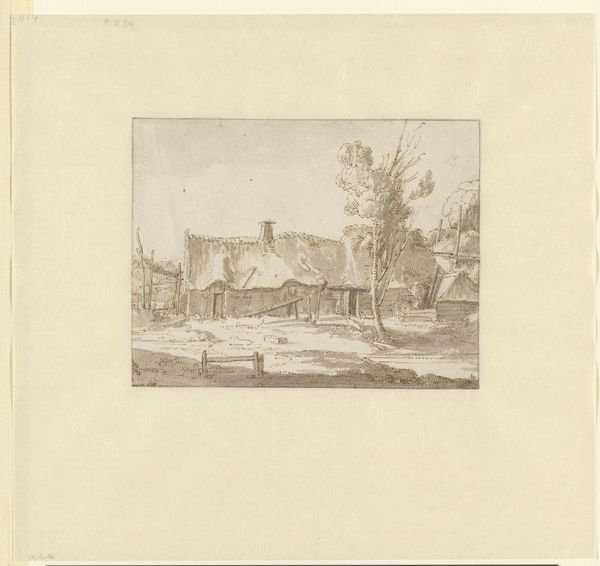
etching
#
etching
#
landscape
#
genre-painting
#
realism
Dimensions: height 225 mm, width 285 mm
Copyright: Rijks Museum: Open Domain
Arie Ketting de Koningh created this print of a farmhouse near Dordrecht using etching, a technique with a long and fascinating history. The process involves covering a metal plate with a waxy, acid-resistant layer, then scratching away lines to reveal the metal beneath. When acid is applied, it bites into these exposed lines, creating grooves that hold ink. The plate is then cleaned, inked, and pressed onto paper, transferring the image. The etched lines define the form and texture, from the thatched roof to the grassy field. The quality of the etched line is crucial, and Ketting de Koningh would have carefully controlled the depth and width of each mark to create tonal variation and a sense of depth. Consider that in the 19th century, printmaking was an essential part of the art world, allowing for the wider distribution of images beyond the elite. Appreciating the craft behind the work, and its social context, offers a richer understanding of its value.
Comments
No comments
Be the first to comment and join the conversation on the ultimate creative platform.

